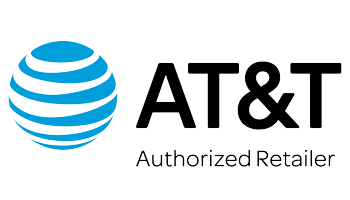
Categories:
Phone:
1-855-715-8745AT&T Mobile Internet
AT&T Mobile Internet, also known as AT&T Wireless Broadband, is a wireless internet solution that uses a mobile hotspot device or a router to connect to the internet. It does not involve a wired connection because the internet signal is passed in the air from cell towers directly to the device. The signal range can travel up to several miles from the tower to the mobile device.
Mobile broadband is a wireless internet connection delivered via a mobile cellular network.
Mobile internet uses cellular networks to provide internet connectivity to mobile devices such as smartphones, tablets, and laptops. It operates through a combination of technologies including cellular towers, radio frequencies, and data transmission protocols.
Here is a basic explanation of how mobile internet works:
Mobile Devices: Mobile devices, equipped with built-in cellular modems, connect to the internet through wireless communication. These devices have SIM cards that contain unique identifiers and authentication information. Most mobile phones have SIM cards, which are small memory cards that connect them to a specific network. SIM cards are installed in all phones across GSM (Global System for Mobile Communications) and CDMA (Code-Division Multiple Access) networks. (Don’t get too hung up on these acronyms unless you love technical details and want to take a deeper dive on your own.) SIMs are always used on GSM phones, and are needed for LTE-capable handsets on CDMA phones. SIM cards are designed to access mobile phone networks, and authenticate the subscriber and ensure the user is accurately billed for used airtime. They also store phone directories, messages, information on roaming across different networks, and many other value-added voice and data services.
There used to be a class of phones, called CDMA phones, that didn't use SIM cards. But with the advent of 4G LTE and 5G networks, most phones have adopted SIM cards.
Cellular Towers: The cellular network is composed of a network of cellular towers or base stations strategically placed within a coverage area. These towers communicate with mobile devices and act as intermediaries between the devices and the internet.
Radio Frequencies: Mobile devices and cellular towers communicate using radio waves. The devices transmit data to the nearest tower using specific radio frequencies allocated for cellular communication.
Data Transmission: When a mobile device wants to access the internet or send/receive data, it establishes a connection with the nearest cellular tower. The tower routes the data to the core network of the mobile service provider.
Core Network: The core network is the central infrastructure of the mobile service provider. It manages and controls the flow of data between mobile devices and the internet. The data is typically transmitted using various protocols such as TCP/IP (Transmission Control Protocol/Internet Protocol).
Internet Access: Once the data reaches AT&T, it can access websites, services, and other online content. AT&T routes the data through its network, connecting to the requested content and delivering it back to the mobile device through the cellular network.
Data Reception: The mobile device receives the requested data and displays it on the screen, allowing users to browse websites, use applications, stream videos, and perform various online activities.
Throughout this process, the cellular tower maintains the connection with the mobile device, allowing for continuous data transmission. The mobile device can switch between different towers as it moves, ensuring a seamless internet connection while on the move.
Mobile internet speed and coverage depends on the strength of the cellular signal, network congestion, distance from the tower, and the specific technology employed such as 3G, 4G, or 5G.
AT&T Wireless Broadband is available in most cities, suburbs, and many rural areas across 50 states, even in Alaska. In fact, AT&T has the longest history of offering service in Alaska among major nationwide carriers, and it has the greatest amount of established coverage. AT&T provides coverage in parts of Alaska using its own network, and it also provides coverage to other parts of the state where it doesn't have its own network. This area is called off-net coverage. Alaska is covered by both 3G and 4G LTE technology. Local conditions and terrain can affect reception. AT&T is among the largest residential providers of mobile broadband in the U.S. by coverage area.
Bundling is a common way that ISPs offer services to customers and AT&T offers many different options in plans. Prices quoted range from $40/mo. - $80/mo. but may include requirements for multiple lines and have other caveats. Contracts may not always be required but in order to have you commit to a contract you may be incentivized with lower monthly costs. Visit AT&T directly to sort through your options for AT&T Mobile Internet.
